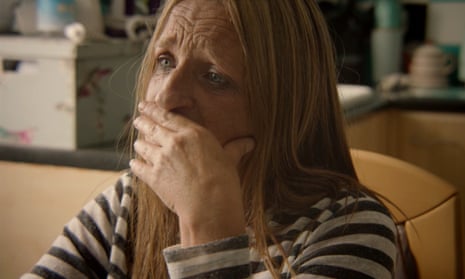Jeremy Kyle Show: Death On Daytime (Channel 4) is a crass title for a rigorous documentary. There is a sense that an investigation like this has been a long time coming. The Jeremy Kyle Show ran for 3,320 episodes over 14 years on ITV, and was at times the channel’s most popular daytime show. More than 1 million viewers regularly watched as its guests argued over paternity, addiction, deceit and betrayal, while Kyle bayed and roared in their faces. ITV claimed, and continues to claim via a lengthy statement at the end of this film, that the aim of the show was to provide “conflict resolution” for its guests.
The documentary’s director Kira Phillips pieces together a different picture, and she does so with quiet fury. Steve Dymond was a guest on the show in May 2019, taking a lie detector test to prove to his partner, Jane, that he had not been unfaithful. The test said he was lying. The episode was never broadcast, because Dymond killed himself a few days after filming. Shortly afterwards, ITV cancelled the series with immediate effect.
The opening episode of this two-part documentary takes Dymond’s story as its tragic centrepiece. We hear from Dymond’s friends and from his ex-partner, Jane, who speaks with moving honesty about his life and state of mind. It sounds as if he had a problem with lying, and he knew it. One of his hopes was that by appearing on the show, he might receive some help for that. The other was simply that he wanted to prove that he had not cheated on Jane, and the show offered him a lie detector test that he would not have been able to pay for privately. He saw The Jeremy Kyle Show as a potential saviour.
“You go on the show because you’re desperate,” says a former member of the production team. Four ex-employees have spoken to the film-makers about their time on the show, on the condition that they would not be identified; instead, actors speak their words, which seems a reasonable compromise. They talk about manipulating the mental health questionnaire that they were supposed to go through with guests. They talk about a culture that not only expected conflict but actively encouraged it; one camera operator who worked backstage describes it as “back-to-back psychological carnage”. They say they would lie to the families of addicts by telling them that they were in competition for a place at rehab, when they were going to be given a place anyway. The idea, it seems, was to push them for a better performance, although we’re told that ITV denies this and are shown a statement that says: “ITV would never condone any of its production staff misleading or lying to guests.”
It is a difficult watch, for a great many reasons. Class is an ugly spectre, and looms large. One of the production team accuses Kyle of looking down on his guests, and in unbroadcast footage, we see him call his guests that day “thick as shit”. The judge who famously described the show as “a human form of bear-baiting under the guise of entertainment” when sentencing one guest convicted of ABH when he head-butted another guest (the show was not broadcast) is scathing about its claims of “conflict resolution”. That guest appears here to talk about the effect the conviction had on his life. He lost his job, his home was repossessed and his mental health suffered.
All of the interviewees here are dealing with pain, and there is a real rawness on display. The mother of a young woman who was addicted to heroin has complicated feelings about the show now. Her daughter was put into rehab as a result of appearing, yet watching Kyle berate her daughter on the show, where he speaks to her with such appalling venom and disdain – “What are you?”, “You’re disgusting” – is abhorrent. It is an awful indictment of social care funding in the UK that for many of these guests, a TV show that turned their trauma into entertainment appeared to be the only way that they could get the help they needed.
There are attempts to explain the popularity of the show by linking it to British comedies that parodied people on benefits, for example, though I think that is an easy target, and there is no mention of the US culture of confrontational chatshows that the The Jeremy Kyle Show clearly adopted. Considering that this is a story about exploitation, great care has been taken to avoid that here, but there are moments that made me feel uneasy; I am not sure what there was to be gained by allowing viewers to hear the distressed, sobbing final voicenotes that Dymond left for his ex-partner.
But overall, this is a withering account of how The Jeremy Kyle Show functioned. Hearing insiders talk about how it was made, and what they did, is incredibly powerful. If some of the details are shocking, they are not surprising; it was all there for 14 years, on screen.
